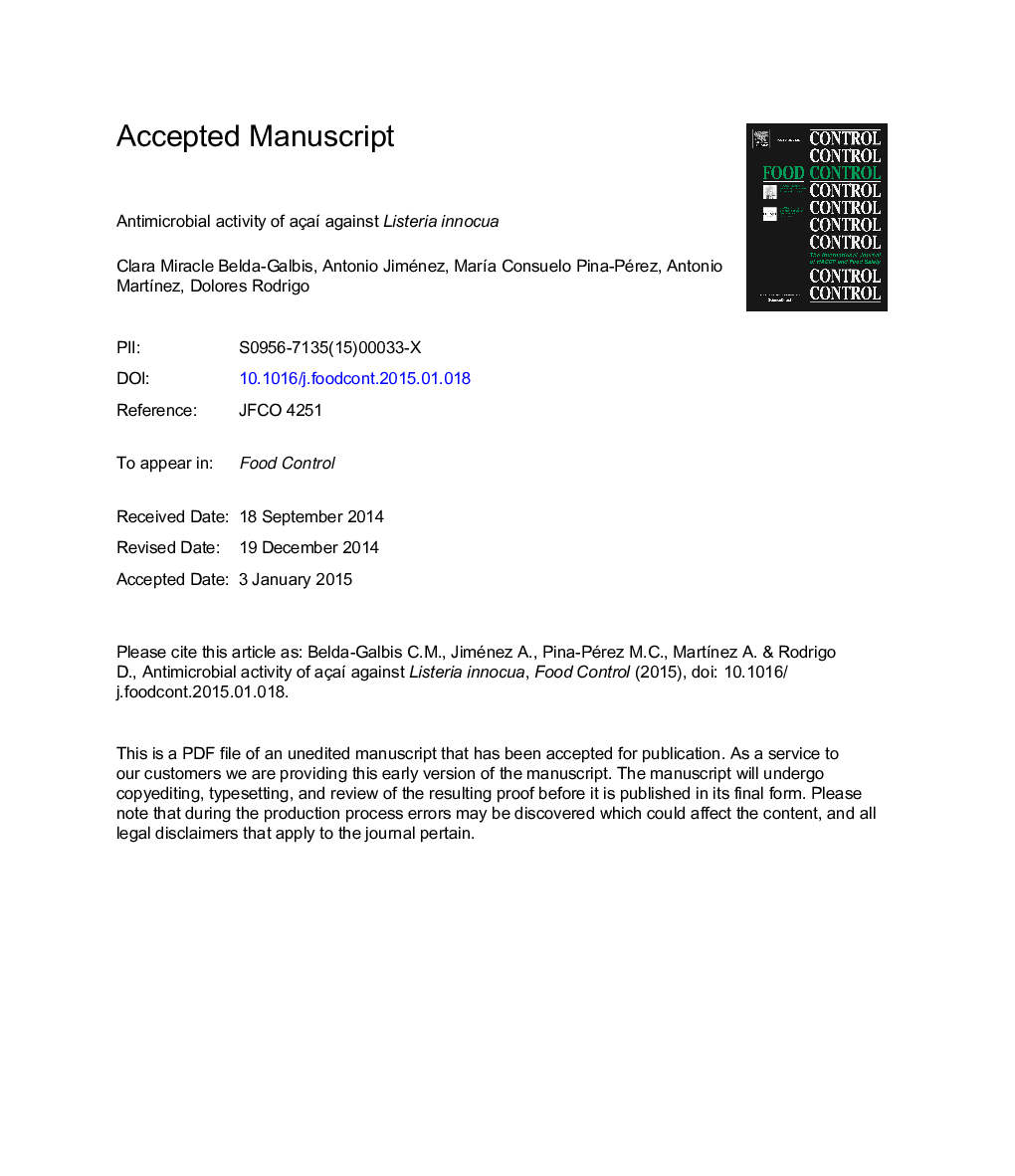| Article ID | Journal | Published Year | Pages | File Type |
|---|---|---|---|---|
| 6390798 | Food Control | 2015 | 25 Pages |
Abstract
A study was carried out to evaluate antimicrobial activity of açaà against Listeria innocua, as a non-pathogenic surrogate for Listeria monocytogenes, at different temperatures (37, 22, and 10 °C), from a kinetic point of view. With this aim, first the Minimum Inhibitory Concentration (MIC) under optimal growth conditions was established (37 °C), and then the effect of 3 non-inhibitory doses (3, 5, and 7 g/L) at 37, 22, and 10 °C was evaluated on the basis of the kinetic parameters lag time (λ) and maximum specific growth rate (μmax). The Total Phenolic Content (TPC) of the samples tested as a function of açaà concentration was also determined. Results obtained showed that the MIC was 10 g/L, containing 2154.91 ± 126.10 mg of Gallic Acid Equivalents (GAE)/L. At non-inhibitory doses, regardless of temperature, the higher the açaà concentration, the higher the value of λ, and the effect of a variation in açaà concentration on λ was greater at high temperatures. Therefore, the addition of non-inhibitory doses of açaà could provide a means of controlling the growth of L. monocytogenes if a cold chain failure occurs, or if any other reason compromises the microbiological safety of minimally processed foods. Consequently, the present study is important both for the science community and for the food industry because it provides the first mathematical characterization of açaà antimicrobial activity and reveals its potential use to control the concentration and growth of pathogenic bacteria in foods free of non-synthetic additives.
Related Topics
Life Sciences
Agricultural and Biological Sciences
Food Science
Authors
Clara Miracle Belda-Galbis, Antonio Jiménez-Carretón, MarÃa Consuelo Pina-Pérez, Antonio MartÃnez, Dolores Rodrigo,
